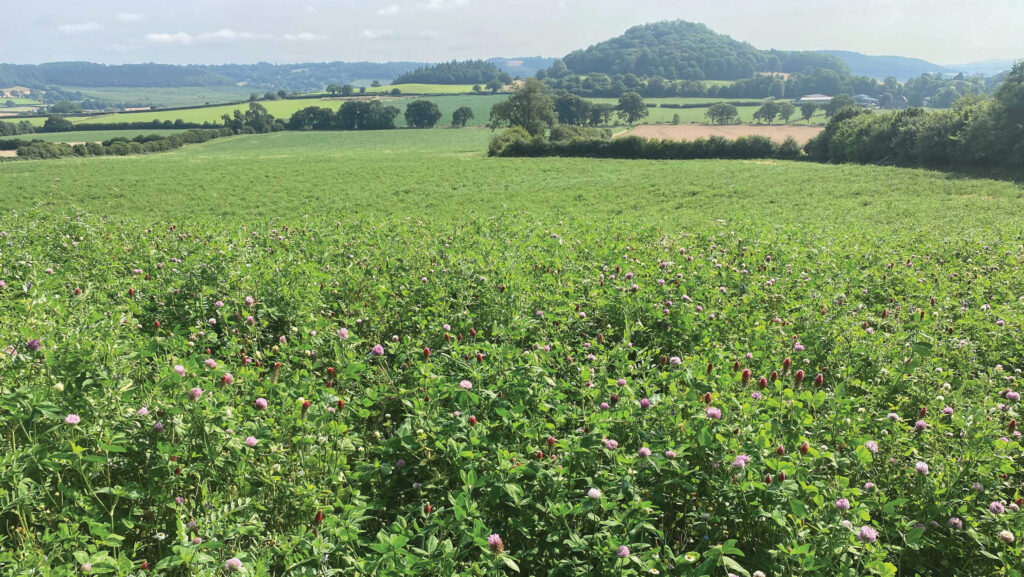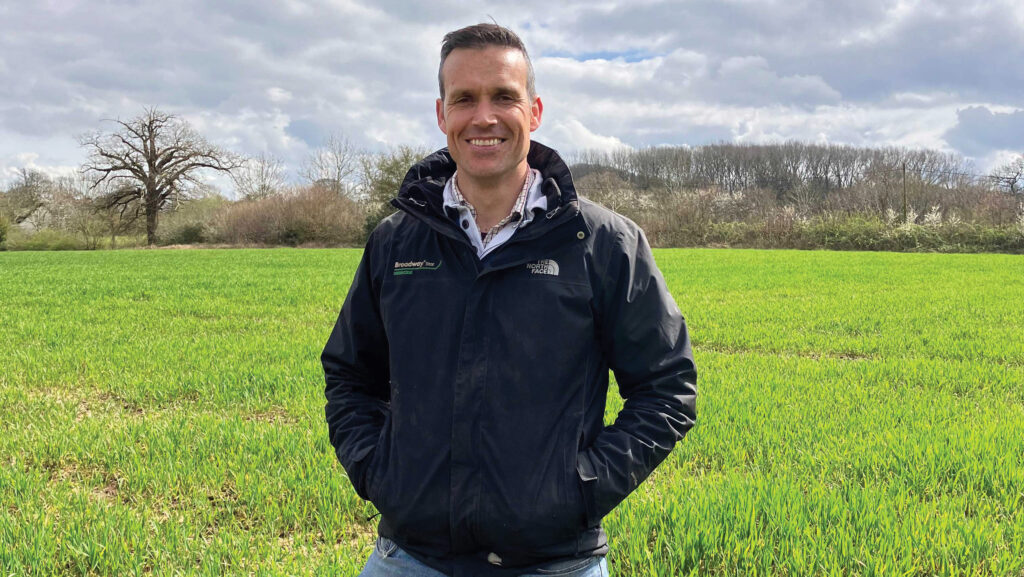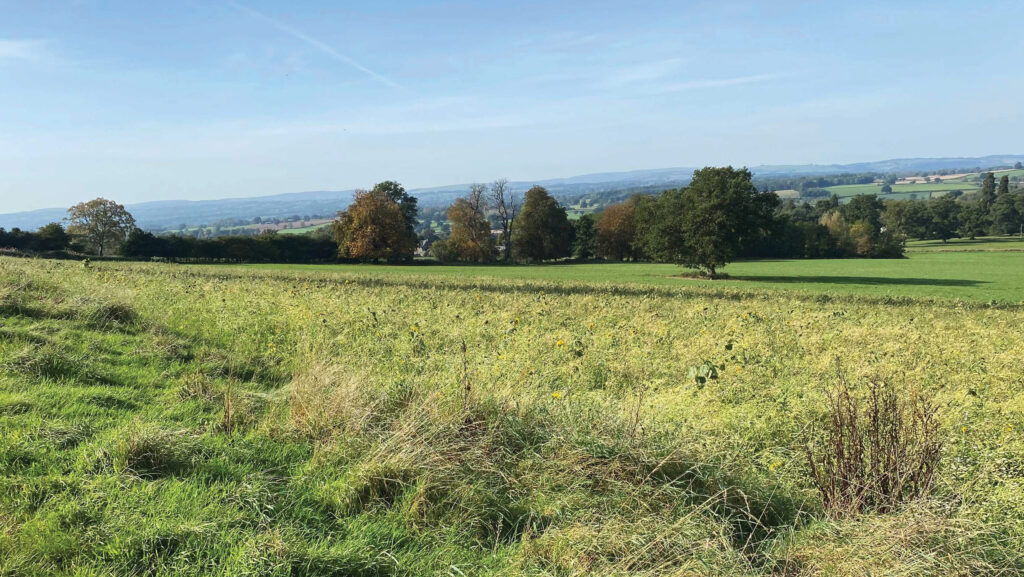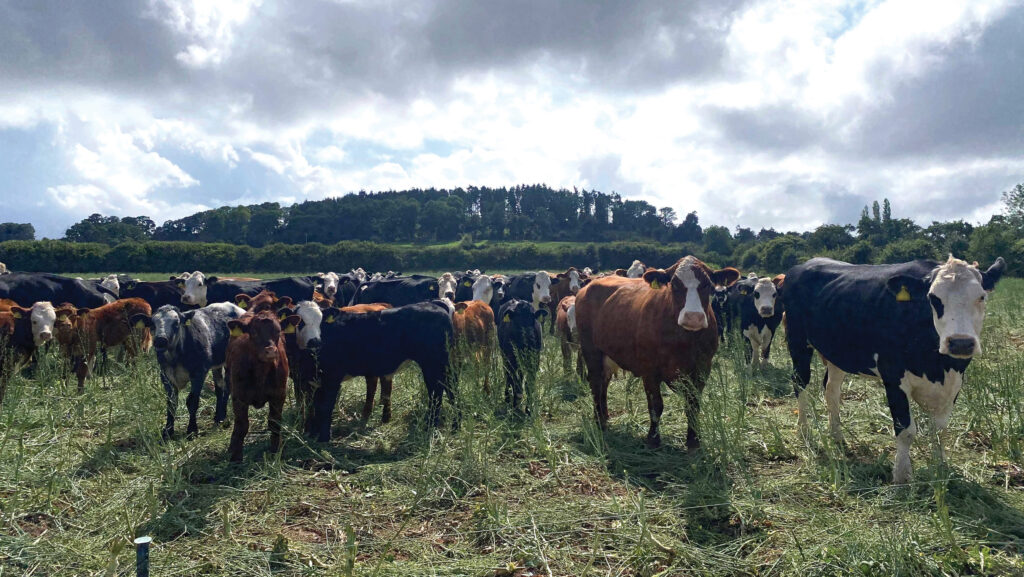How SFI actions closely align with Herefordshire mixed farm
 © Garnstone Farms
© Garnstone Farms Garnstone Farms received its highest level of subsidy payment this year, thanks to a practical Sustainable Farming Incentive and remaining Basic Payment Scheme income, which exceeded the peak of previous BPS payouts.
However, with accelerated payment reductions hitting farmers, this figure is set to tumble.
See also: Getting the most from intercropping: Your questions answered
Chris Greenaway, farm manager at the Herefordshire estate calls for farmers to make the most of the Sustainable Farming Incentive (SFI).
“The scheme is currently here to be had, so I advise farmers who have not signed up yet to see how it can work for you. If we don’t take it, it will soon go,” he says.
“I encourage everyone to use it while it’s on offer.”

Chris Greenaway © Garnstone Farms
SFI options at Garnstone Farms
- Soil management plan
- Integrated pest management plan
- Nutrient assessment
- Hedgerow assessment
- Hedgerow trees
- Manage hedgerows
- Legume fallow
- Winter bird feed on grassland
- Grassy corners/blocks
- Legumes in grassland
- No insecticide
- Very low-input grassland
- Flower-rich grass margin
- Cover crops
- Herbal leys
- Buffer strips
- Companion crops
- Legumes in grassland
- Species-rich grassland – applying for this for next year
Garnstone Farms’ SFI agreement encompasses an array of options, including overwinter cover crops, herbal leys, buffer strips, companion cropping and no-insecticide crops.
This totals about £140,000/year of the three-year agreement.
“Everything we do as part of our SFI agreement at Garnstone is what we were already doing. The SFI payments alone are not enough to completely change our farming approach,” says Chris.
The farm’s cropping rotation consists of herbage seed, winter wheat, oilseed rape, winter beans and winter oats.
Spring cropping includes Tenderstem broccoli and maize grown for a local anaerobic digestion plant. A beef herd of 700 cattle is grazed on the estate’s grassland and herbal leys.
When selecting SFI options Chris avoided anything which would compromise output of his primary crops.
“Know what your primary crop is and don’t do anything that will affect its outcome,” he says.
“Consider the longevity of the agreement and any potential unforeseen problems that may arise from land being in certain options or out of production.”
The only option which Chris opted for which could potentially go against his rule of thumb, is the no-insecticide on crops which pays £55/ha.
However, he says barley yellow dwarf virus has not been an issue on farm, particularly now they are drilling later in the season, so he hopes this will not be a problem.
Do break crops pay?
A question growers should ask themselves is: Do break crops pay? For Chris, the answer is yes.
“Growing whole crop maize and winter oats for an AD plant are really great break crops for us. I can’t see us giving these up anytime soon.
“What’s more, because we don’t have enough grain storage on the farm it is a big driver behind our rotation planning.”
But for those worried about unprofitable break crops, particularly oilseed rape, Chris explains how it all comes down to risk.
“With OSR yields of 3-3.5t/ha, you’re getting about a £700/ha net margin before rent and finance.
“By the time you factor-in potential loss of yield through cabbage stem flea beetle damage, pigeon attacks, slug damage and establishment issues, you’re now looking at a £300/ha margin.
“Suddenly a legume fallow isn’t looking too bad. Although this isn’t all what it’s cracked up to be.
“It was meant to be good control for blackgrass, but many farmers seem to have found this can only be achieved by mowing areas six-plus times a year.
“In this instance, it’s costing you time and money and you’re into negative margins.”
Chris reminds growers to consider the wider landscape, staff, machinery and infrastructure when making decisions.
Ask yourself what is your ambition? Where do you want the farm to be in five-to-10 years’ time?
He talks us through the SFI options which align with the estate and how he is getting the most from them.
Companion cropping: £55/ha
Companion cropping now makes up 25% of the 843ha total arable cropping area each year. This includes growing companion crops alongside maize, oilseed rape and cereals.
“Companion cropping across 600ha has potential to bring in a net margin of £15,000/year,” says Chris.
“This assumes a high-cost scenario accounting for a £30/ha establishment cost, whereas in practice we can establish crops for less than that.”
- Oilseed rape and buckwheat Buckwheat is established 7-10 days before OSR sowing to deter cabbage stem flea beetle attacks
- Maize and Italian rye grass Italian ryegrass is established between the maize rows during the third week of June, when plants are about shin high, to reduce soil erosion at harvest
- Wheat and beans Chris found that when growing wheat after beans, volunteer beans frequently grew. He is considering broadcasting additional beans into the crop to meet the companion crop payment requirement
- Oats and clover understorey Chris has previously established a clover understorey in oats and is also considering broadcasting beans into an established crop.
Cover crops: £129/ha
A 180ha area of overwinter cover crops comprised of oats, vetch and radish or phacelia is broadcast using a fertiliser spinner after harvest, ahead of maize and broccoli planting, to promote soil health.
“This is a very cost-effective establishment method which sees us achieve significant biomass. It’s something we were already doing, so the SFI payment is an added bonus,” says Chris.
“Seeds are scratched with a 6m set of spring tines and then rolled, where we can cover 60ha/day.
“This season, however, cover crops went in late and growth is not where we would hope for this time of year.”
When it comes to cover crop destruction, sheep are brought on to the farm to graze crops during January, February and March before spraying with glyphosate.
Muck is then applied and disced-in, ahead of maize planting with a strip-till cultivator and a Vaderstad Tempo drill.
Buffer strips: £515/ha

Grass margin © Garnstone Farms
The farm is now home to more than 50km of 6m wide buffer strips, to help reduce the risk of erosion and run-off.
The grass strip must buffer an existing landscape feature such as a hedgerow, ditch, waterway, woodland or stone wall.
On arable land this pays £515/ha, while on improved grassland this is lower at £235/ha, totalling £16,700/year for Garnstone Farms.
“Quite often we can leave these buffer strips to naturally regenerate. We manage the strips by mowing to keep on top of weeds.
“With herbage seed a big part of rotation, ensuring grassweeds do not creep into the field is really important for us,” says Chris.
Herbal leys: £382/ha
Garnstone Farms is now home to 81ha of herbal leys grazed by the farm’s herd of 700 cattle.
The aim of this is to provide varied root structures and help maintain soil structure and fertility.
The farm has 240ha of grassland unsuitable for arable cropping of which a proportion has been cultivated for herbal leys.

The farm’s beef herd is grazed on grass, herbal leys and broccoli residue © Garnstone Farms
Garnstone Farms’ net cropping margins (before rent and finance)
- Wheat £900/ha
- OSR £750/ha
- Herbage seed £750/ha
- Beans £400/ha
- Oats £400/ha
- Forage maize for anaerobic digestion plant £700/ha
- Whole crop for anaerobic digestion plant £700/ha.

